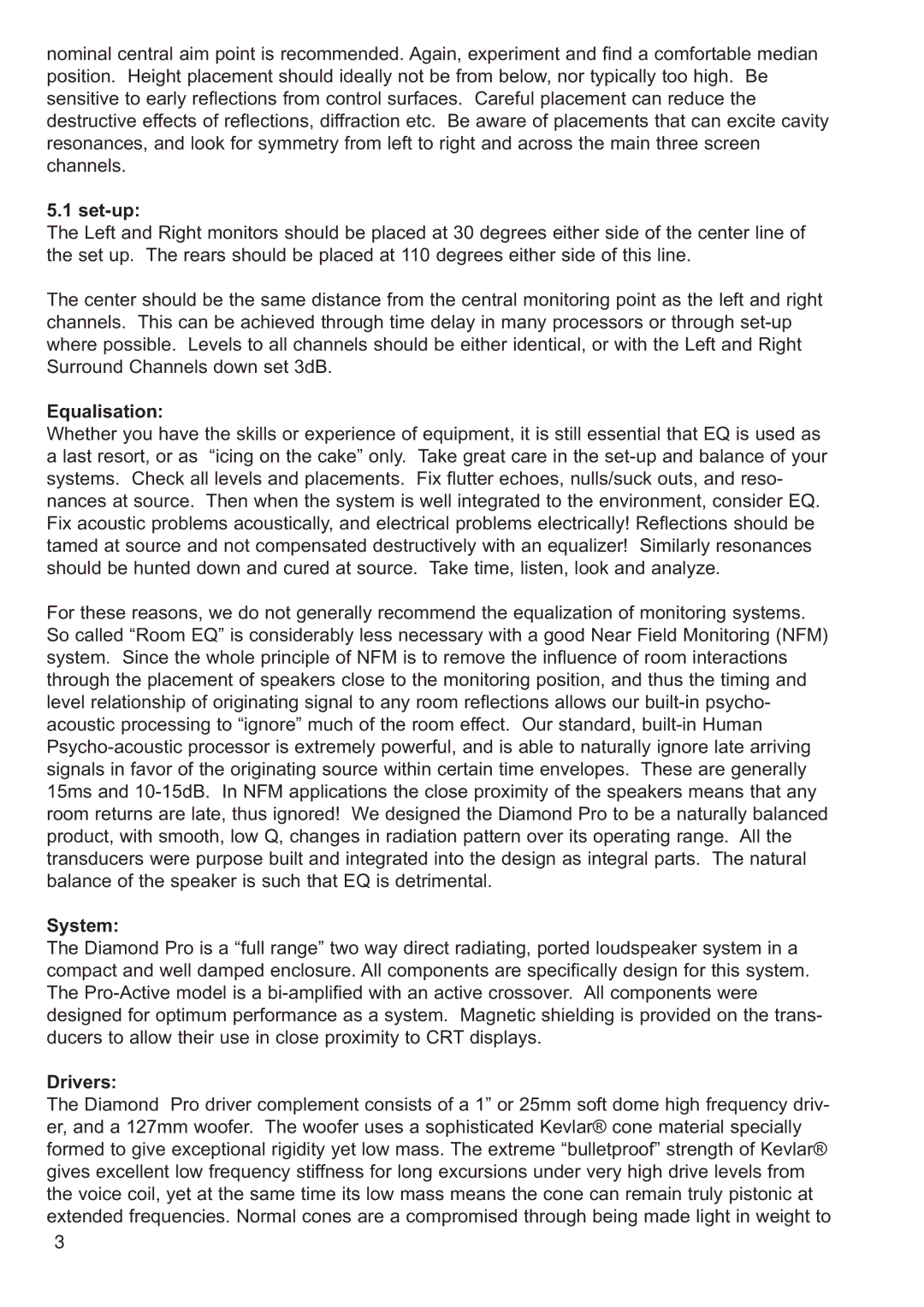nominal central aim point is recommended. Again, experiment and find a comfortable median position. Height placement should ideally not be from below, nor typically too high. Be sensitive to early reflections from control surfaces. Careful placement can reduce the destructive effects of reflections, diffraction etc. Be aware of placements that can excite cavity resonances, and look for symmetry from left to right and across the main three screen channels.
5.1 set-up:
The Left and Right monitors should be placed at 30 degrees either side of the center line of the set up. The rears should be placed at 110 degrees either side of this line.
The center should be the same distance from the central monitoring point as the left and right channels. This can be achieved through time delay in many processors or through
Equalisation:
Whether you have the skills or experience of equipment, it is still essential that EQ is used as a last resort, or as “icing on the cake” only. Take great care in the
For these reasons, we do not generally recommend the equalization of monitoring systems. So called “Room EQ” is considerably less necessary with a good Near Field Monitoring (NFM) system. Since the whole principle of NFM is to remove the influence of room interactions through the placement of speakers close to the monitoring position, and thus the timing and level relationship of originating signal to any room reflections allows our
System:
The Diamond Pro is a “full range” two way direct radiating, ported loudspeaker system in a compact and well damped enclosure. All components are specifically design for this system. The
Drivers:
The Diamond Pro driver complement consists of a 1” or 25mm soft dome high frequency driv- er, and a 127mm woofer. The woofer uses a sophisticated Kevlar® cone material specially formed to give exceptional rigidity yet low mass. The extreme “bulletproof” strength of Kevlar® gives excellent low frequency stiffness for long excursions under very high drive levels from the voice coil, yet at the same time its low mass means the cone can remain truly pistonic at extended frequencies. Normal cones are a compromised through being made light in weight to
3
